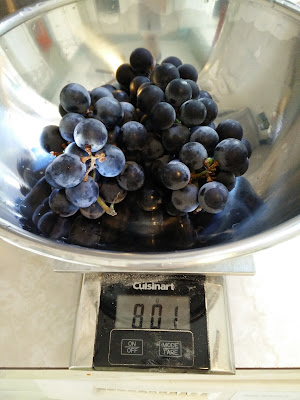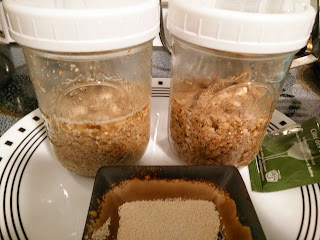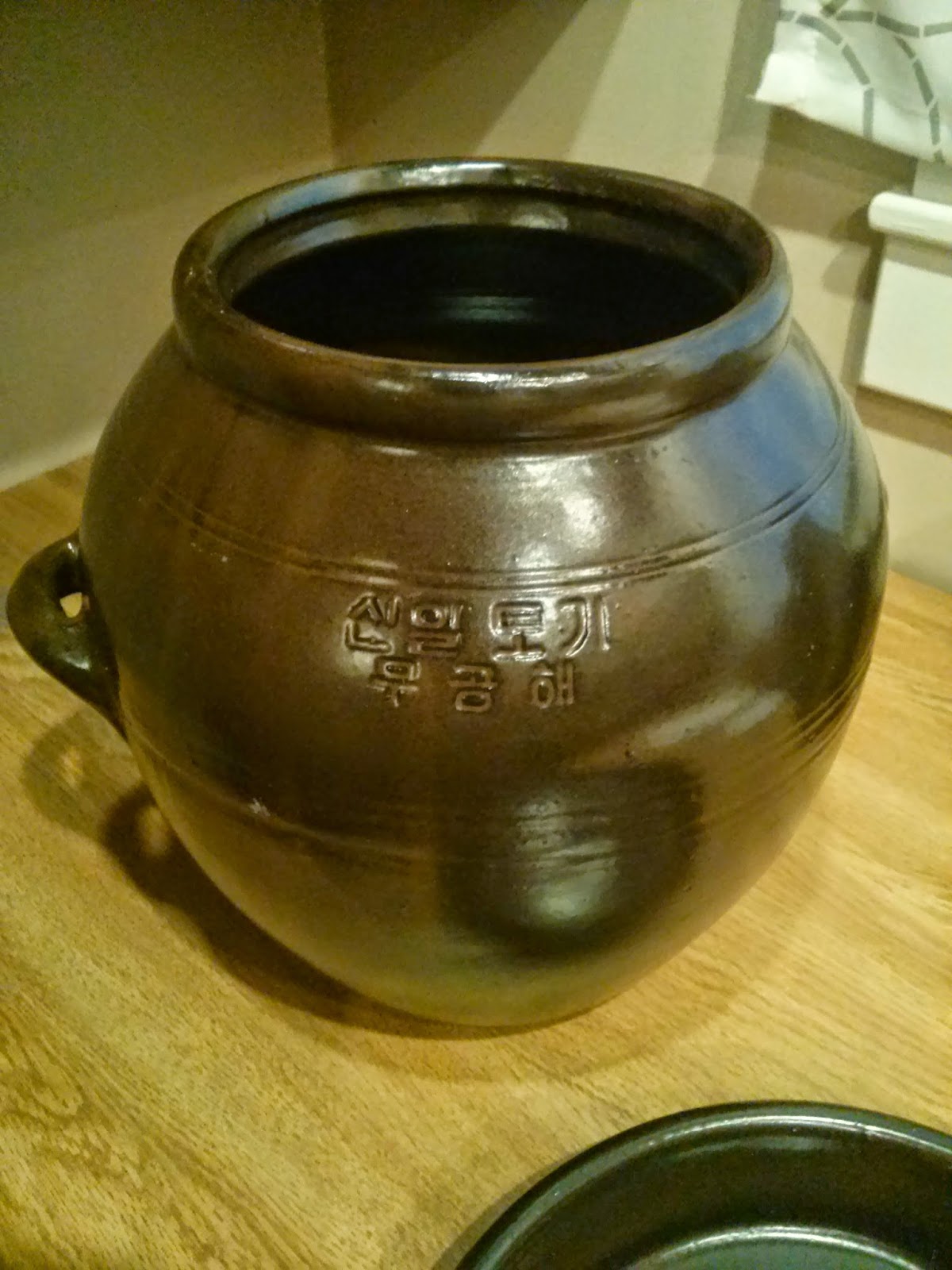Grape Makgeolli 포도 막걸리
I'm not a grape expert, but I know that Korean grapes are delicious. They have thick, deep purple skins with a characteristic grape aroma. The taste is floral and reminiscent of grape candy, but with all the freshness of real fruit.
 |
| ~700 grams when stems are removed |
So when I picked up my latest book on makgeolli brewing a few months back, I knew that I had to try this recipe. This is the first brew in my brewing schedule, which is a list of my planned brews and recipes.
Grape Makgeolli 포도 막걸리
This recipe uses a seokim starter that was previously discussed here. The starter establishes a yeast colony ahead of time, so this is technically a two-stage fermentation; however, the seokim is a rather small amount so it does not feel like an iyangju or samyangju.
 |
| Seokim after ~2 days |
Ingredients
- Sweet rice - 1 kg
- Nuruk - 100 g
- Grapes - ~700 g
- Seokim - 250 ml
- Water - 1.5 l
I bought the grapes from my local H-Mart and washed them in vinegar and water. They were left to dry while other ingredients were prepared.
The rice was soaked for 4 hours and drained for 30 minutes before steaming. To improve the steaming results I steamed in two batches by splitting the rice in half. When the first half was finished (~30 minutes for 500 g) it went to the cooking racks and the second half was steamed.
Tip: I also placed a wet towel in-between the pot and steamer basket to improve the seal. Last time a lot of steam was lost between the bottom of the steamer basket and the top of the pot (probably because it's a cheap pot). This helped decrease the time required to steam the rice by keeping the steam where it belongs.
The nuruk was soaked for ~4 hours in 500 ml of water.
 |
| 100 grams of nuruk soaking in 500 ml water |
While the rice cooled grapes were mashed by hand in a metal bowl. I used plastic gloves, but you can just use your hands if they're clean. Mash them until the mix is a deep magenta. It will look like wine already!
When the rice is cooled, the nuruk soaked, and the grapes mashed, start combing ingredients in your sterilized jar. The rice goes in followed by the nuruk, grapes, seokim, and the rest of the water (1 liter). Mix well by hand as each ingredient is added.
After mixing wipe down the sides inside the jar and place the lid on. The mixture should be stirred twice a day for the first few days to get the yeast colony started. After that you can sit back and watch the process.
 |
| All ingredients inside the hangari, ready for fermentation |
The smell during fermentation was deep, floral grape aroma mixed with the smell of yeast and nuruk musk. The alcohol was identifiable by day 4 and grew in strength until the last day of fermentation. I let this one go for 10 days before filtering and bottling. I think it could have gone longer, but I wanted to keep some of the sweetness from the grapes before it was completely consumed by the yeast. Days 1, 2, and 3 are shown below (left to right).
The brew was stirred for the first 3 days of fermentation to encourage yeast growth. The pictures above are before stirring; once stirred the purple color was more apparent.
 |
| 10th day of fermentation |
I used a new filtration system to help strain and bottle the makgeolli. The brand is called Mirro and it is originally made for straining jelly or jams. I'll make a more detailed post about this product later, as it was a huge improvement and allowed for a more relaxed straining process.
The result was amazing. Three bottles of grape makgeolli, 30% dilution, no sweetener necessary.
After 2 days in the refrigerator I opened a bottle to taste any changes. The grape flavor was still there with a very slight decrease in the sweetness. A small amount of carbonation had built up, but not enough to make the bottle hard, which is a good sign that fermentation is complete. Overall very good makgeolli. If you like grape flavored wines, give it a try!












This comment has been removed by a blog administrator.
ReplyDeleteGreat and I have a dandy supply: How Many Houses Has Hometown Renovated residential renovation contractors
ReplyDelete